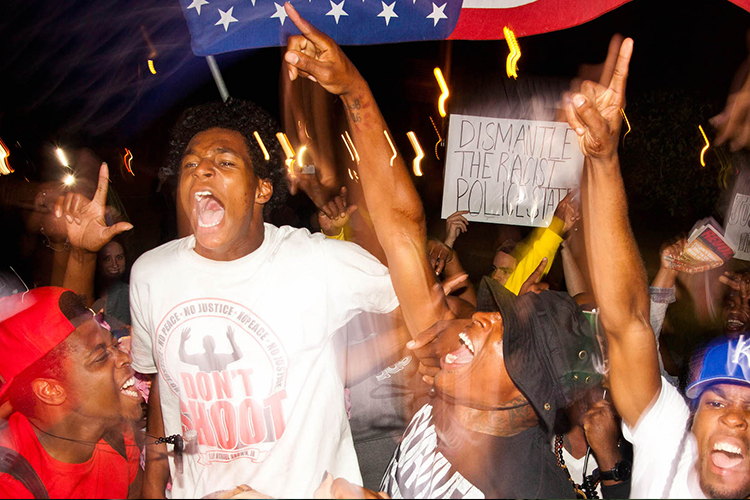
It has been over two years since an unarmed black teenager named Michael Brown was shot and killed by a police officer in Ferguson, Missouri. His body stayed on the ground in the middle of the street where he was shot for four and a half hours. Brown, like so many other young black Americans who came before him and would come after, became the face of a movement.
But _Whose Streets?_ is not the story of Michael Brown’s death. It’s not the story of Darren Wilson, the officer who killed him, nor is it the story of how a grand jury decided not to indict him. This film, at its very heart, is about the people. It’s about a community — not just the community of Ferguson, but the black community as a whole — that had finally had enough.
The emotions of this community in _Whose Streets?_ are raw and uncomfortable. The anger these protesters feel is palpable. Their frustration and grief is heartbreaking. But the discomfort and unrest we feel watching _Whose Streets?_ is essential to understanding the film and the societal situation it depicts. After all, discomfort and unrest, as a general rule, are necessary to create change.
Woven between the stories of tension and frustration, however, are stories of love. We can’t understand the protests without understanding the people behind them. Directors Sabaah Folayan and Damon Davis have given us a gift: They’ve taken us beyond the national news stories, beyond the fires and the tear gas and the chants, to let us into the protesters’ lives. We see their families, their motivations, their personal struggles and what makes them tick.
One family is Brittany and her fiancé Alexis, a pair that is fierce and unstoppable in their resistance but kind in scenes with Brittany’s young daughter, Kenna. Early in the film, Brittany makes her goal as a parent clear: She wants to teach Kenna to stand up for herself and others and use her voice when something isn’t right.
On the first anniversary of the grand jury’s decision not to indict Wilson, some of the original protesters come back together to reaffirm that their efforts are not over. And Kenna, one year after she watched her mother take part in the protests, leads a powerful chant as Brittany watches beside her with a wide grin.
Other lighter moments in the film exemplify the spirit of Ferguson’s citizens and offer glimpses into what keeps them fighting. We see David, one of the more prominent voices in the documentary, playing with his toddler son and trying to teach him to be tough — only to have the boy charge into David’s arms with a big hug instead.
Several scenes show the community building the memorial for Brown on the street where he was murdered, lining the sidewalks and road with candles, stuffed animals, posters and photographs. And when part of the memorial is set on fire one morning, we see that same community building it right back up again and piling more teddy bears on top of the ashes.
But these uplifting moments don’t distract from the real problems that the community and the protesters faced. Clips and interviews throughout the film show the deep flaws of Ferguson’s police department and its response to the protests.
One subject of the film, at an interview in his home, pulled out a collection of the weapons used against him that he had accumulated. He had multiple tear gas canisters and rubber bullets, not to mention a detailed account of how each was used against him. His collection acted as physical evidence for what he called “chemical warfare.”
Other videos showed police responding to protests with long rifles and tear gas. In some scenes, the officers wore gas masks to protect themselves while shooting the gas at civilians.
And that was just the reaction of local law enforcement — when Gov. Jay Nixon enacted the National Guard, it rolled into the suburbs of St. Louis with tanks. The protesters responded by reminding the Guard that Ferguson was not Iraq.
The film is unabashedly critical of other elements of the Ferguson protests as well. Folayan and Davis send a clear message that national media coverage was sensationalized and not comprehensive of the full story. They also show frustration and disappointment over President Barack Obama’s reaction, which many believed could have been stronger.
_Whose Streets?_ is a vital look into the people behind the protests and the work that still has to be done.
**MOVE gives _Whose Streets?_ 5 out of 5 stars.**